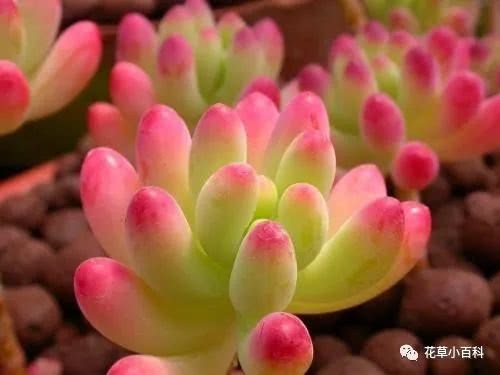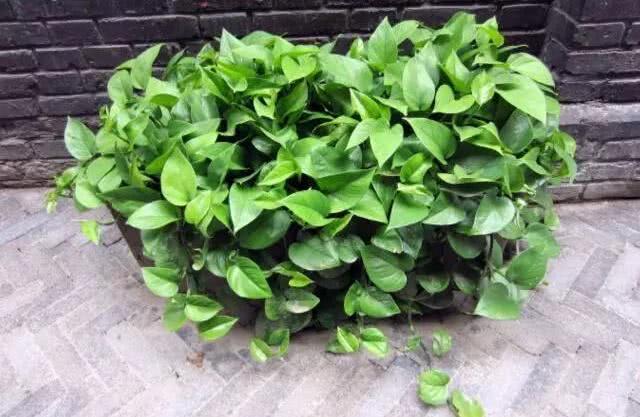The thing about succulent plants drying their roots: how long does it take to dry their roots?

Text
Picture and text: network
A meat friend showed me a picture of the meat that had just been trimmed and asked me how long I needed to dry the root. I looked at the picture of the root system and replied that I would put it in the pot after drying for one day, and then wait another day to water it.
Later, another meat friend showed me a picture of the meat that had just been trimmed and asked me how long it would take to dry the root. After seeing the picture, I replied that I would dry the root for three days to serve it, and then wait another day to water it.
I answer several questions about root drying time every day, so I don't realize that these two questions were raised by the same meat friend. So the consequences were very serious, and the meat friend was infuriated by my "very irresponsible" behavior, so he posted both photos to me and asked me why one had to hang for one day and the other for three days. You have to give me an explanation. Do you want to say that if you hang it for a few days, can you still plant flowers happily together?
So I think it is necessary to talk about the root drying time publicly.
First of all, why should we dry the roots? That's a good answer. I'm afraid of black rot.
Then why don't you dry the root or it will rot? This is also easy to answer. Because, when you cut the root of the meat, there will be a wound in the cross-section. the thinner the root, the smaller the wound, and the thicker the root, the bigger the wound. Regardless of the size of the wound, the root system has a structural feature after being cut off, that is, the cross section is divided into two parts: the cortex and the vascular column from the outside to the inside (of course, scientifically speaking, the structure of the root is much more complex than I said). This structure is like a water pipe. Cortical cells can absorb water and channel the absorbed water to the vascular column, through which the plant can transport water to all parts of the plant.
When we cut the root system, it's like cutting off the water pipe, and the vascular string in the center of the pipe is exposed. It's like a highway to all parts of the flesh. Once the fungus enters here, there is no doubt that black rot will occur, and the speed of black rot will be very fast. This is what we often call duct-level black rot, and it can't be seen outside that the leaves have crackled and fallen to the ground.
So we have to dry the roots so that the meat has enough time to repair these wounds one by one and plant them in the pot.
Some meat friends in the process of drying roots will find that as long as the meat is exposed to the sun, it will not take a long time, no matter how big the wound will soon become dry. Even with a thick thumb that has just been cut off, the tissue of the stem can quickly dry and shut up as long as it is exposed to the sun. So they thought that if they had dried the wound, they couldn't wait to put it in the pot.
But don't be happy too soon. If you go into the pot at this time, you will have planted the seeds for the occurrence of black rot.
Because the wound that we seem to have dried is actually killing the cells and tissues exposed to the air and losing water. For the flesh wound itself, it has not been strictly prohibited to repair. It's like a group of soldiers guarding a major traffic road, snapping off, and a lot of soldiers are seriously injured and begin to bleed. So we began to expose these soldiers, which caused them to die, and of course they stopped bleeding. But this does not mean that the rest of the soldiers have formed a defensive formation. Just blocked the intersection with the bodies of dead soldiers. This kind of defense is quite fragile for Didi people.
Meat may have a complete black rot in the next few days. Although the probability of this complete black rot is not very high, it is also worthy of attention. Even if there is no complete black rot, there will be varying degrees of decay in the location of those wounds, which will seriously hinder the germination of new roots, resulting in long-term disobedience of the meat, gradual necrosis of the original roots and many other problems.
So the real wound repair is not dry, but through cell division, a thick layer of callus is formed on the surface of the wound, thoroughly isolating the environment inside and outside the wound, which is considered to complete the repair of the wound. The formation of callus mainly depends on a way of amitosis. Amitosis is different from normal cell division, in which the DNA substance in the cell is not accurately replicated. The cells of the callus are just constantly roughly dividing, the nucleus is simply divided into two, the cytoplasm is also divided into two, and then a new cell wall is built, and the division is complete. This crude method of cell division is suitable for wound repair, because amitosis does not require accurate DNA replication, so it consumes very little energy and can quickly produce new cells. These newborn cells do not have any special function, but are used to wrap up injured plants.
But it's not that simple, because only the epidermal cells of the flesh are good at this rapid amitosis, and the internal vascular tissue is not good at doing it. Therefore, all the restoration work is carried out from the perimeter to the middle. We all know the algorithm of circular area. If the radius of the wound increases a little, the area of the wound will increase geometrically. The callus must divide into enough cells to fill the entire section.
A thin white root is broken, and the meat may only take 10 minutes to repair the wound. A root system with a diameter of 1 mm may take them an hour. 2mm root system, maybe one day is not enough.
So the thicker the root system, the longer we need to dry, waiting for the callus to form completely. When the callus is fully formed, the wound is no longer a wound, it will have the same defense as the uninjured tissue, and will no longer be afraid of fungal invasion.
Of course, it is certainly not a reliable method to measure the diameter of the wound and then calculate the area and then decide the time to dry the root. I have a very simple way to estimate the root drying time, which is to dry for 1 day for every 1 mm diameter of the wound. Generally speaking, simple root pruning will not hurt the thick main root, so it can be dried for 1-3 days depending on the thickness of the cut root. If you behead meat, this method of calculation is also appropriate. A 1.5-centimeter decapitated seedling can simply dry for 15 days to heal her wound, and 15 days later she can be cut.
The principle of watering on the basin is the same as that of drying roots. In the process of potting, we tend to bruise some roots. These are minor injuries, and they will repair them quickly, so it is a good habit to wait until the next day to water them, because the next day these minor wounds have almost been repaired.
Forming the good habit of drying roots will help you a lot. Some of the black rot that occurs a few months later may have something to do with the fact that you didn't dry your roots well at first. In those wounds, there has been a constant tug-of-war between the callus and the fungus. If the formation of the callus is dominant, then nothing will happen. If one day after a few months, the callus is defeated, hum, and black rot will happen brutally. You may not know this, but you buried this scourge a few months ago when you were in a hurry to get into the basin.
The article is organized by the succulent plant boutique, the copyright belongs to the original author, some articles can not find out the source, marked as the source network, if there is any infringement, please contact us immediately, we will deal with it in time.
- Prev

fleshy soil
The soil of succulent plants is very important, many people think so, but the soil suitable for succulent plants is not necessarily only one kind, now the mainstream soil peat/coconut chaff mixed granular soil, one to save trouble; Second, sterile and insect-free; Third, loose through...
- Next

Big Sister Green Luo Li has an ingenious way to water and grow prosperous without yellow leaves.
Speaking of growing flowers, I feel that it is really an activity with a lot of benefits, and now people's living standards have been greatly improved, and they also have time and energy to grow flowers, and raise a pot of flowers, which can also beautify the room and purify the air.
Related
- Wuhan Hospital Iron Tree Blooming Result Was Instantly Frightened by the Gardener Master
- Which variety of camellia is the most fragrant and best? Which one do you like best?
- What is the small blue coat, the breeding methods and matters needing attention of the succulent plant
- Dormancy time and maintenance management of succulent plants during dormancy
- Minas succulent how to raise, Minas succulent plant pictures
- What are the varieties of winter succulent plants
- How to raise succulent plants in twelve rolls? let's take a look at some experience of breeding twelve rolls.
- Attention should be paid to water control for succulent plants during dormant period (winter and summer)
- Watering experience of twelve rolls of succulent plants
- Techniques for fertilizing succulent plants. An article will let you know how to fertilize succulent plants.

